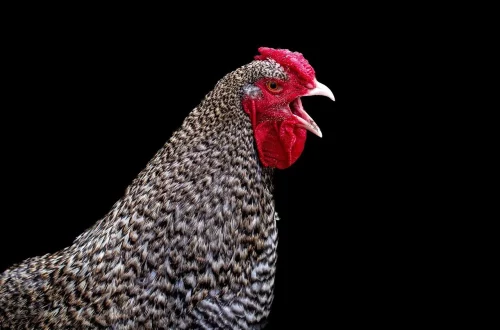
Essential Items for Your Horse First Aid Box: A Complete Guide
Taking care of a horse is a rewarding but challenging responsibility. Whether you own a spirited thoroughbred or a gentle draft horse, ensuring their health and safety is paramount. One essential aspect of horse care that is often overlooked is having a well-stocked first aid box. Just like humans, horses can face emergencies, from minor injuries to more serious health issues. Being prepared can make all the difference in such situations.
A properly equipped first aid box not only helps you respond quickly to injuries but also gives you peace of mind while riding or caring for your horse. It is important to be proactive rather than reactive, as accidents can happen at any time, whether you’re at home in the stable or out on a trail ride. Knowing what to include in your horse’s first aid kit can save valuable time and reduce stress during an emergency.
In this guide, we will explore the essential items that should be included in your horse’s first aid box. Each item plays a critical role in ensuring your horse receives the best possible care when faced with unexpected situations. Understanding how to use these supplies effectively will enhance your confidence as a horse owner and caretaker.
Basic Supplies: The Foundation of Your First Aid Kit
The first step in creating an effective horse first aid kit is to gather essential basic supplies. These items serve as the foundation for your first aid kit, ensuring that you are prepared for a wide range of common injuries and emergencies.
First and foremost, a good first aid kit should include various bandaging materials. This includes gauze pads, adhesive bandages, and vet wrap, which are essential for dressing wounds and preventing further injury. Sterile gauze pads are particularly important as they can be used to cover open wounds and absorb any bleeding. Vet wrap is also crucial because it provides support and holds dressings in place without sticking to the horse’s fur.
In addition to bandaging materials, antiseptic solutions are vital for cleaning wounds. Products like iodine solution or chlorhexidine can help reduce the risk of infection by disinfecting the affected area. Always ensure that the antiseptic is safe for use on horses, as some human products may be harmful.
Another key item is scissors, which can be used to cut bandages or remove any foreign objects that may be embedded in a wound. It is advisable to have a pair of blunt-tipped scissors to minimize the risk of further injury while working on your horse.
Don’t forget to include a thermometer in your first aid kit. Monitoring your horse’s temperature can provide crucial information about their health. A normal temperature for a horse is typically around 99 to 101 degrees Fahrenheit. If your horse’s temperature is outside of this range, it may signal an underlying health issue.
Lastly, having a supply of latex or nitrile gloves is essential for maintaining hygiene when treating wounds. Gloves protect both you and your horse from potential infections and contaminants.
By ensuring you have these basic supplies in your horse first aid kit, you will be better prepared to handle common injuries and emergencies effectively.
Medications and Treatments: Essential Additions
Beyond basic supplies, your horse first aid kit should also contain a selection of medications and treatments that can address various health concerns. Having the right medications on hand can be invaluable in managing your horse’s health and preventing complications.
One of the most commonly used medications in horse care is an anti-inflammatory drug, such as phenylbutazone or flunixin meglumine. These medications can be used to alleviate pain and reduce inflammation in the event of an injury. Always consult with your veterinarian regarding the proper dosage and usage, as these medications can have side effects if not administered correctly.
Additionally, having a supply of electrolytes is useful, especially during hot weather or after strenuous exercise. Electrolyte supplements help replenish lost minerals and maintain hydration, which is crucial for your horse’s overall health.
Another important item to include is a broad-spectrum antibiotic ointment. This can be applied to minor cuts and abrasions to prevent infection. Ensure that the ointment is safe for equine use, as some products intended for humans may not be suitable.
If your horse has a history of colic or digestive issues, consider including a colic remedy in your first aid kit. Products like simethicone can help alleviate gas and bloating, providing relief until you can contact your veterinarian.
It is also wise to have a supply of insect repellent and wound dressing sprays. These products can help protect your horse from flies and other pests that may aggravate wounds or cause discomfort.
Remember, while having medications on hand is important, it is equally crucial to consult with your veterinarian before administering any treatments. They can provide you with guidance on the appropriate medications for your horse’s specific needs.
Specialized Equipment: Being Prepared for Emergencies
In addition to basic supplies and medications, your horse first aid kit should include specialized equipment designed for more severe emergencies. These tools can be instrumental in stabilizing your horse until professional veterinary help arrives.
One vital piece of equipment to include is a hoof pick. Horses can often get stones or debris lodged in their hooves, which can cause lameness or injury. A hoof pick allows you to safely remove any obstructions and inspect the hoof for potential injuries.
A portable first aid blanket is another essential item. This can be used to keep your horse warm and comfortable in case of shock or during transport to a veterinary clinic. Ensuring your horse remains calm and warm can significantly impact their recovery.
Having a sturdy halter and lead rope is crucial for managing your horse during an emergency. If your horse is injured, they may become agitated or difficult to handle. A reliable halter and lead rope can help you maintain control and safely transport your horse if necessary.
Additionally, consider including a muzzle in your first aid kit. In cases of severe injuries or when a horse is in pain, they may be prone to biting or kicking. A muzzle can help prevent further injury to both the horse and the handler while medical assistance is sought.
Lastly, a flashlight or headlamp can be invaluable during nighttime emergencies. Good visibility is essential for assessing injuries and providing care in low-light conditions.
By including specialized equipment in your horse’s first aid kit, you can ensure that you are prepared for a wide range of emergencies, providing your horse with the best possible care when they need it most.
Maintaining Your First Aid Kit: Regular Checks and Updates
Having a well-stocked first aid kit is only part of the equation; it’s equally important to maintain it regularly. A first aid kit that hasn’t been checked or updated in a long time may contain expired medications or inadequate supplies, which can hinder your ability to respond effectively during an emergency.
Start by scheduling regular checks of your first aid kit, ideally every few months. During these checks, inspect all items for expiration dates, especially medications and antiseptics. Discard any expired products and replace them with fresh supplies. This ensures that you always have effective treatments on hand when needed.
In addition to checking expiration dates, take inventory of your supplies. Assess whether you have enough of each item, particularly bandages and medications. If you find that you frequently use certain supplies, consider increasing your stock to ensure you never run out.
It’s also a good idea to keep a list of the contents of your first aid kit, along with their expiration dates, inside the kit itself. This can help streamline the process of checking and updating supplies. You may also want to include contact information for your veterinarian and any emergency services in your area.
Training yourself and anyone else who handles your horse on how to use the supplies in the first aid kit is equally important. Familiarity with the items and their uses can make a significant difference in a high-stress situation.
By committing to regular maintenance of your first aid kit, you’ll ensure that you and your horse are always prepared for any unexpected situations.
In conclusion, while this article provides a comprehensive guide to essential items for your horse’s first aid box, it is important to remember that it does not serve as medical advice. Always consult your veterinarian for specific health concerns or emergencies involving your horse. Being prepared with the right supplies and knowledge can help enhance your confidence and ensure your horse’s well-being in times of need.




